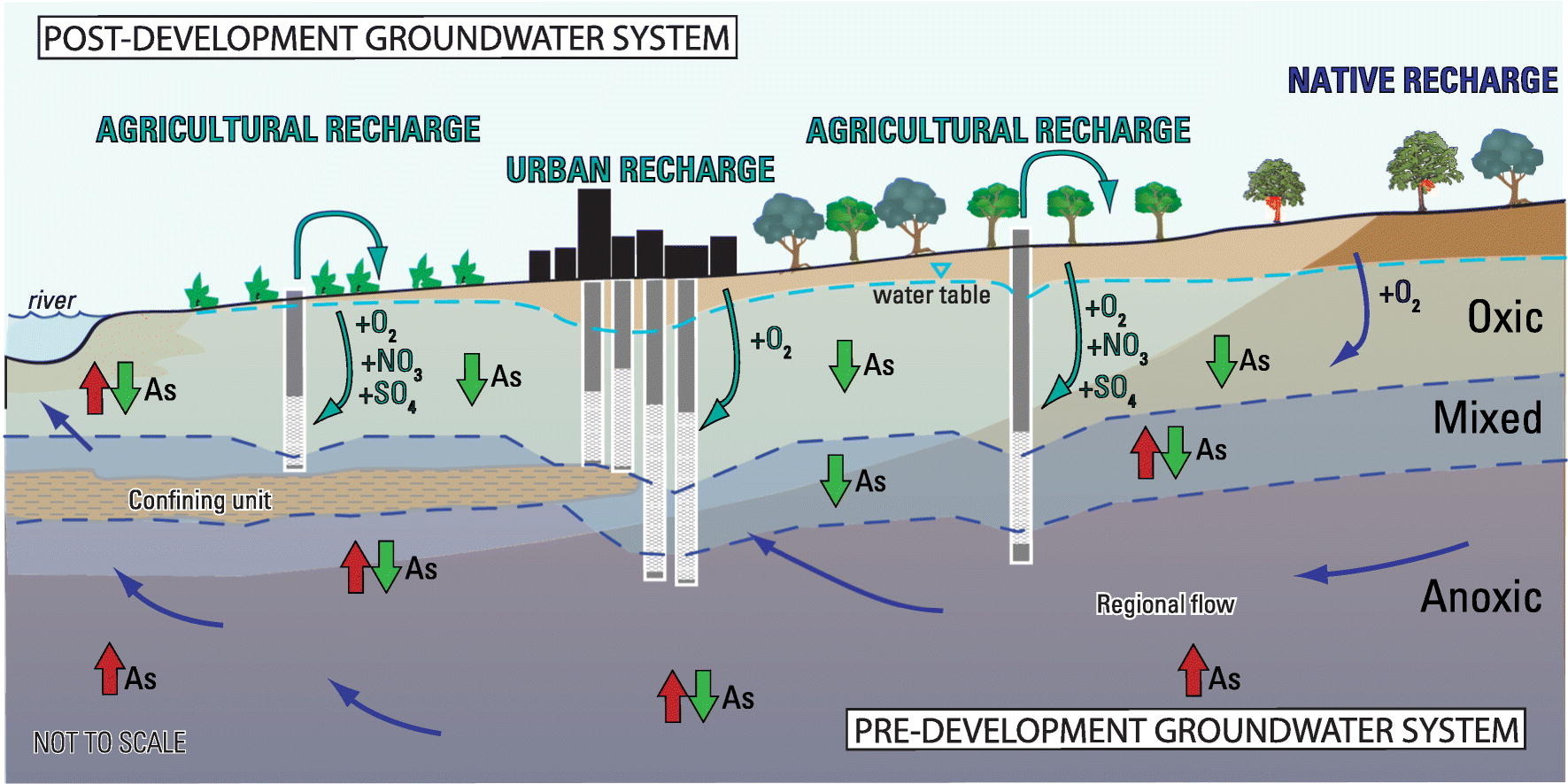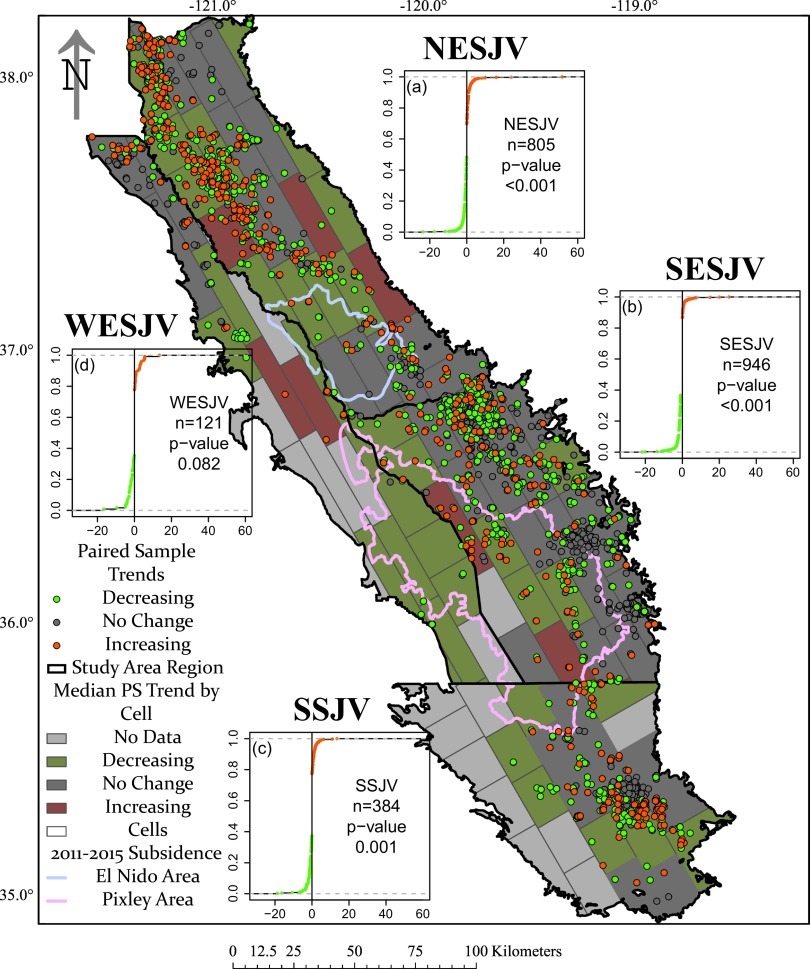What We're Learning
Trends in Arsenic Concentrations in the San Joaquin Valley
Arsenic is known to be a problem in groundwater used for drinking water supplies in the San Joaquin Valley. About 10% of the are of groundwater resources used for public supply contain more than the USEPA MCL of 10 µg/L (Belitz and others, 2015; a similar percentage of the area supplying domestic wells is also over the MCL based on GAMA-PBP studies completed as of 2019). Most public-supply and domestic wells currently yield groundwater with arsenic levels below 3 µg/L and do not exhibit trends in concentration (Haugen and others, 2021).

A more detailed analysis of San Joaquin Valley groundwater data identified where there are trends in arsenic concentrations in specific wells, and identified factors that could explain those observations (Haugen and others, 2021). Decreasing trends could be explained by downward movement of recharged water from irrigated agriculture because nitrate concentrations increased where arsenic decreased. Increasing trends could be explained by depth and proximity to the Valley trough where older, reduced groundwater is prevalent.
This graphic summarizes changes in arsenic concentrations identified in the paper.

As new data are collected, new trends information will be available in the two user-driven maps on the GAMA-PBP home page.

